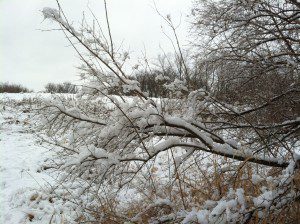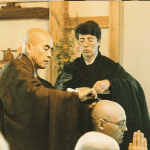 My last post seemed to rile some folks up, as did the Old Monkey Mind in a related effort to be clear and gentle, it seems to me. James Ford is a much nicer person than I, btw, much more developed too, and it shows in many ways including the genteel generosity of his words.
My last post seemed to rile some folks up, as did the Old Monkey Mind in a related effort to be clear and gentle, it seems to me. James Ford is a much nicer person than I, btw, much more developed too, and it shows in many ways including the genteel generosity of his words.
Despite our careful consideration – oh, how we suffer (wink, wink) – “some” Soto Zen teachers got rather huffy and puffy about owning a share of the koan literature and the right to definitive commentary. Koans in Zen circles seem like money, sex, and children in relationships – the hot buttons around which conflict springs. They are provocative little buggers, (the koans, that is, not the teachers, just to be clear) so it makes sense to me.
“They’re our teaching stories too,” said one dear friend and Soto teacher off blog while messaging on Facebook, no less, or our make-up phone call afterwards, I don’t remember which. And we’re probably going to need another make-up call after this post.
Well, fair enough, koans are stories for everybody and nobody that I know is saying differently. And that’s the point.
For koan Zen, they’re not only teaching stories. As James cuts the cat, there is koan study and koan introspection. In “study,” koans are stories to be interpreted, sometimes with deep feeling and subtle application of the practice suggestions embedded in the context of the koan. Good stuff. Great dharma talk material. No problem.
This mode of interpretation, btw, may be largely a Western invention as a Japanese-trained priest once told me. Kind of literary interpretation, I think he said, which he’d never heard in a dharma talk in Japan.
In koan introspection, face-to-face presentation of the koan point, the truth happening point, is the point. The face-to-face part is important, it seems to me, and the method of student-meeting-teacher, self-meeting-self, has developed because it so wonderfully suits and even draws out the insights or sets up the accidents and manifestations called for in the koan.
Now from the depths of your Pure Shikantaza you might well have seen through the koan but without the presentation of the koan in face-to-face meeting, who’s to know? Who’s to verify? Who’s kidding who?
After all, koans are essentially relational, as a student said to me recently. Very few are about somebody sitting alone and having the once-and-for-all “Eureka!” moment. The koans themselves are mostly set in the face-to-face context and so of course the koan point is best actualized in that same context – and then generalized to sitting, standing, walking, lying down.
So especially those of us who haven’t undergone that process, yes, please do exercise caution when commenting on koans by noting softly and humbly from time-to-time, showing tenderness and inadequacy, the true “don’t-know-mind,” that there might be a meaning and dimension to koan that we have not yet fathomed. Certainly true for me.
This caution (as I said, dear, in my last post if you read the dang thing before getting all defensive), is always a good idea for all of us, yes, including me. I am, after all, sitting here and talking to myself and I hardly know what I’m saying so don’t listen to me and think this is definitive in any way. I’m just a “this and that,” zig-zag, poorly trained, working-class white kid from the swamps of northern Minnesota, mostly self-educated, bumbling along making quite a mess of this life, trying to make sense of it all, hammering nails in empty space, despite the obvious futility of that endeavor.
So your thoughts are welcome.












